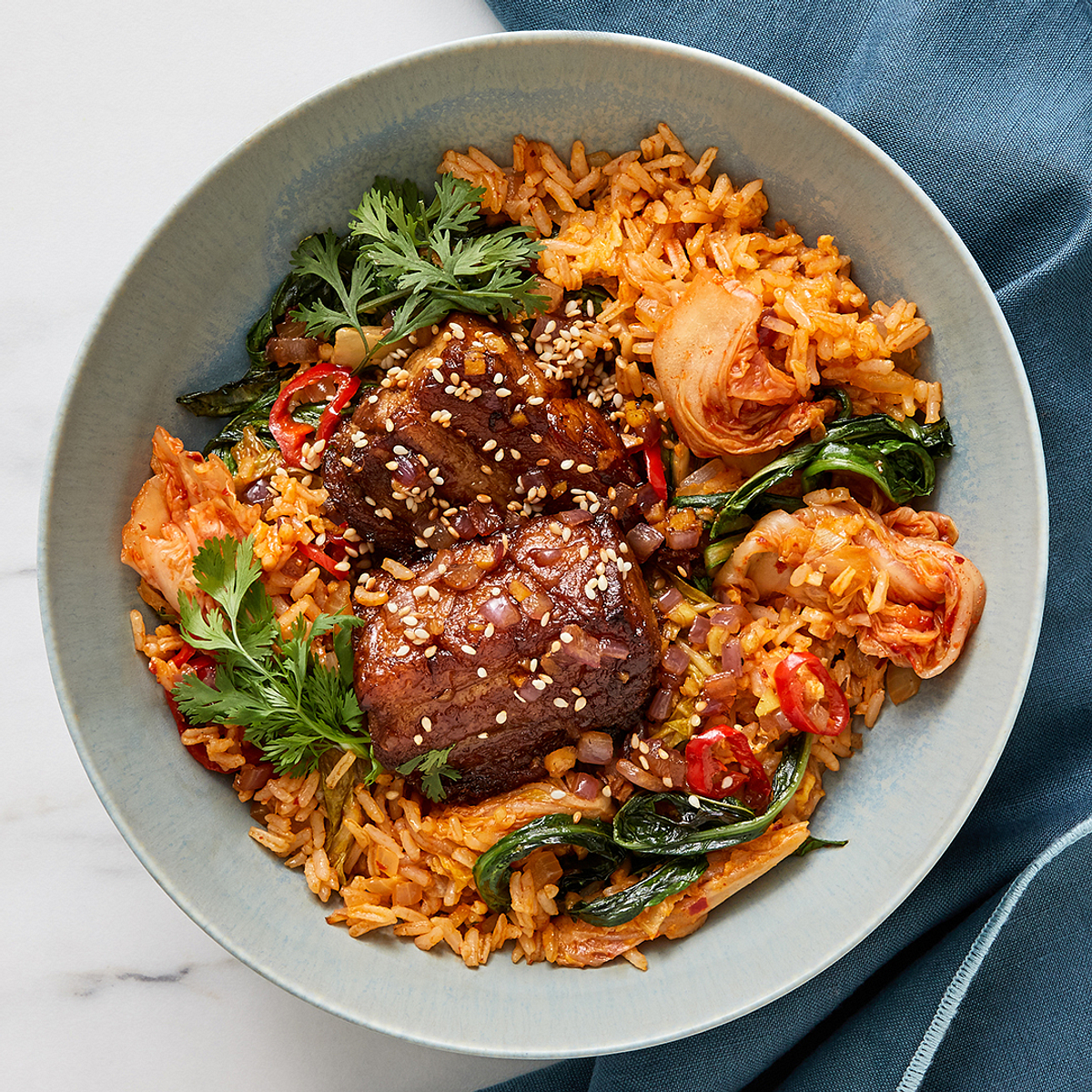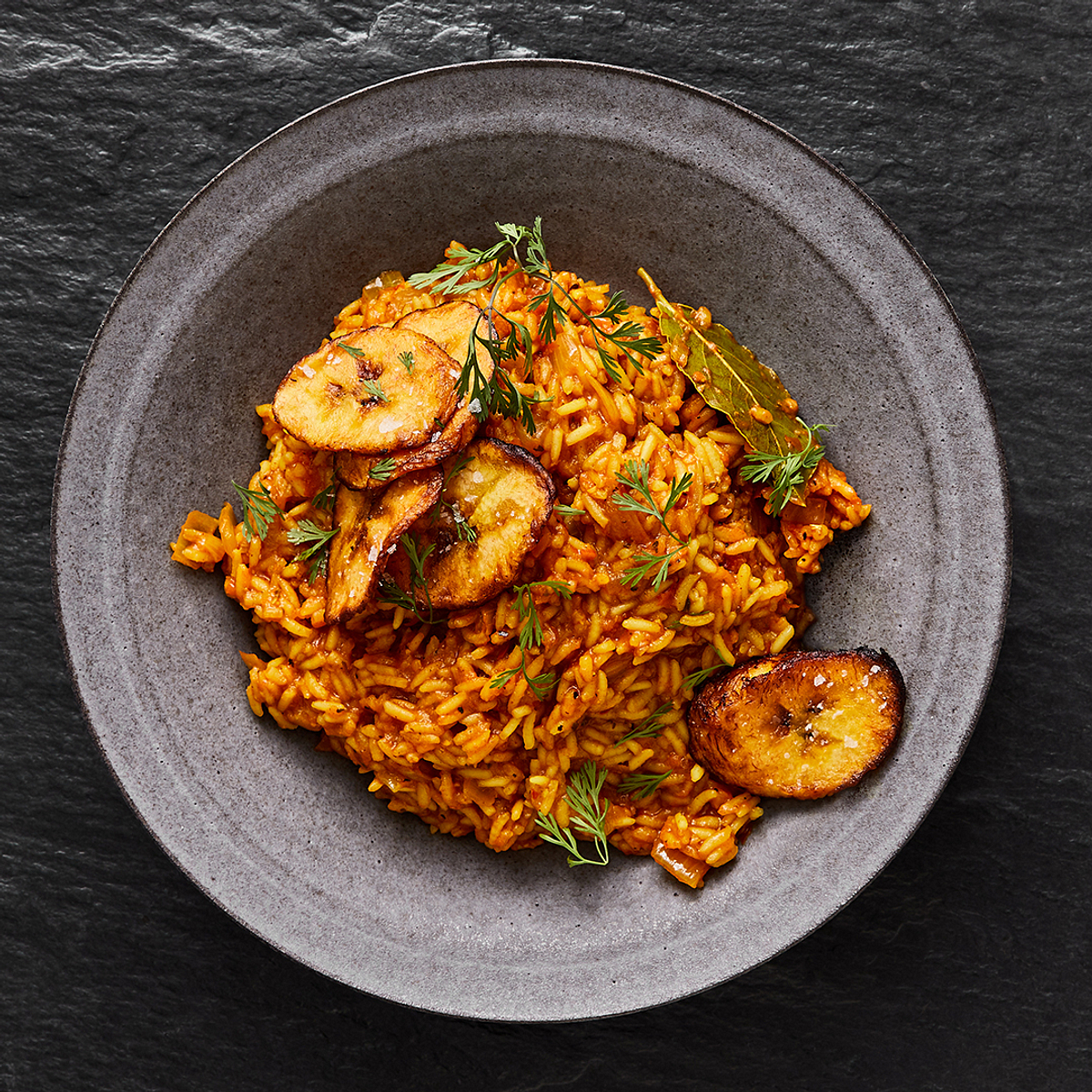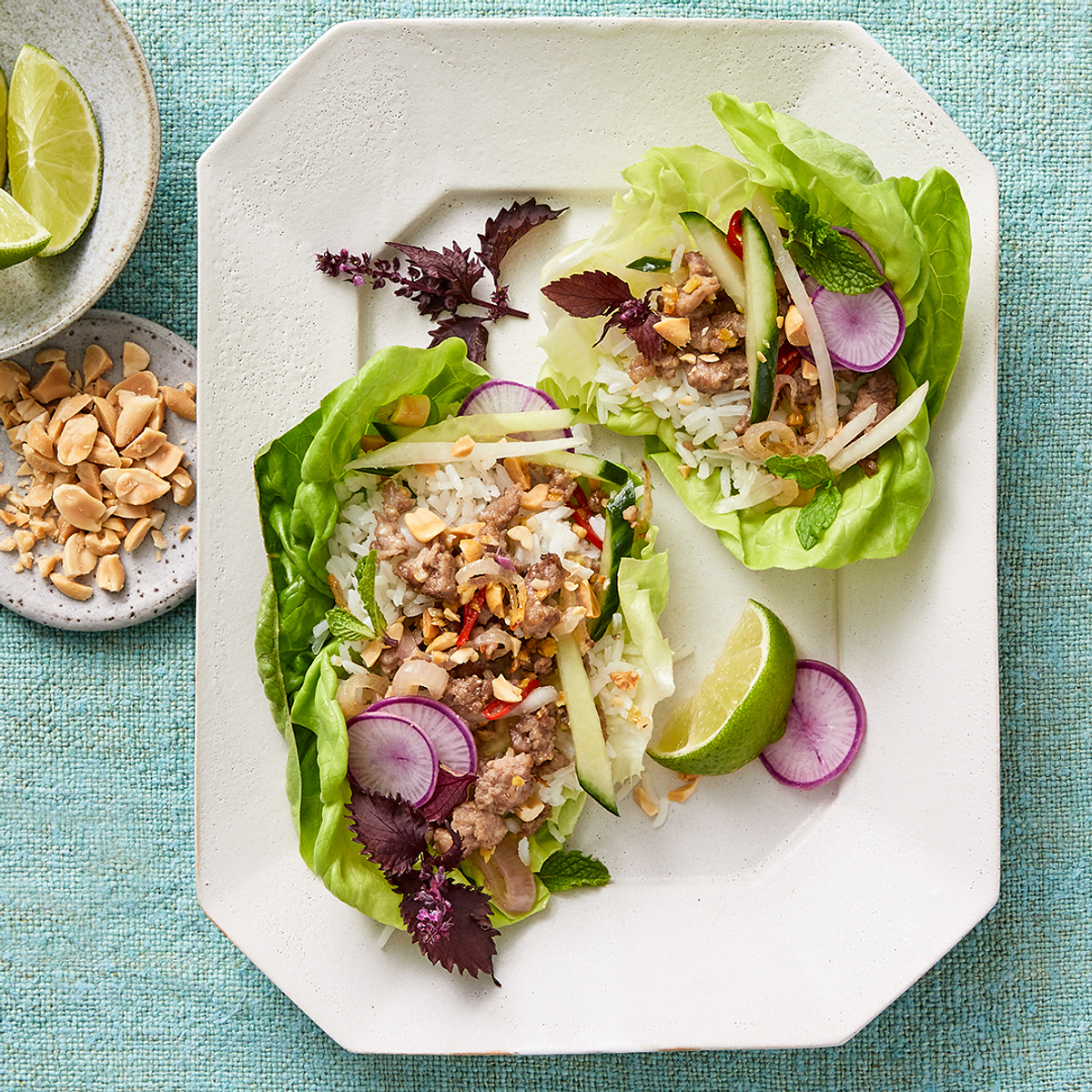There’s no quicker shortcut to a great meal than having leftover RiceSelect® Rice tucked away in the fridge. If, that is, you know how to reheat rice properly to turn those leftovers into something stupendous!
Far from a nuisance, leftover rice is a valuable building block to creating a number of delicious dishes. Still, following the proper steps — when storing rice and reheating it — is key to staying safe and to enjoying every single grain. When stored or reheated improperly, leftover rice can grow bacteria that can lead to food poisoning, or reheated rice syndrome. Thankfully, reheated rice is perfectly safe if you know how to handle it correctly!
Avoiding an unpleasant texture is another benefit of learning how to reheat cooked rice. Neither dried out nor gummy, leftover rice that is reheated correctly can taste as good as fresh. It’s also incredibly versatile, meaning that you can repurpose leftover rice to match whatever it is you’re craving.
With methods for reheating rice in myriad ways — on the stove, in the microwave, in the air fryer and more — plus tips on how to reheat frozen rice, you’ll want to save this post to consult for years to come. Learn how great leftover rice can really be, and you’ll look forward to having plenty of this versatile ingredient on hand!
How to Store Leftover Rice
One of the most important steps to enjoying leftover rice is learning how to store it correctly. Not only is it incredibly important for food safety, it will also keep the rice fresher and protect its delicate texture.
To store leftover rice, follow these simple steps:
- To store leftover rice in the fridge, begin by cooling the rice down. To do this quickly, spread rice onto a baking tray. You can also divide large batches of rice into smaller containers. Be sure to store rice in the fridge within 1 hour of cooking to prevent the growth of harmful bacteria.
- Store rice in airtight containers.
- Consume leftover rice within 3-4 days. Never reheat leftover rice more than once.
- To freeze leftover rice, follow the same steps, ensuring you store the rice in freezer-safe containers or bags. Remove as much air as possible to help prevent freezer burn.
- Label and date the containers or bags and use frozen rice within 6 months.
How to Reheat Rice on the Stove
Want to know how to reheat rice on the stove? Simply follow these steps:
- To reheat rice on the stove, use the same method for rice that’s been stored in the fridge and rice that’s been frozen. Begin by placing the leftover rice into a saucepan. If the rice was previously frozen, simply break it into small chunks so that it fits in the saucepan.
- To the saucepan, add 1-2 tablespoons of water (or broth, for more flavor) for every 1 cup of rice.
- Cover the pot and warm the rice over medium-low heat, stirring periodically until warmed through and steaming. To ensure food safety, heat rice to a temperature of 165°F.
- Add in desired flavorings, such as butter, oil, herbs or spices.
How to Reheat Rice in the Microwave
Want to know how to reheat rice in microwave? Simply follow these steps:
- Place rice (from the fridge or freezer) into a microwave-safe bowl or glass dish. Add 1 tablespoon of water per cup of rice and cover with a damp paper towel.
- Microwave the rice on HIGH for 30 seconds. Uncover and stir. Continue microwaving, in 30-second increments, and stirring, until rice is evenly heated (165°F).
Reheating Rice in the Oven
This method is a great option when reheating large batches of leftover rice. To reheat rice in the oven, simply follow these steps:
- Preheat oven to 300°F.
- To a large baking dish, add 2 tablespoons of water for every 1 cup of rice. Spread the rice over the water. Cover the dish tightly with foil.
- Bake the rice until heated through to a temp of 165°F. This should take between 15-45 minutes, depending on how much rice you are reheating and whether it was frozen or stored in the fridge prior to reheating.
How to Reheat Rice in a Rice Cooker
Convenient for cooking rice, a rice cooker can also be used to reheat leftovers. Want to learn how to reheat rice in a rice cooker? Simply follow these steps:
- Into the inner pot of the rice cooker, add rice and 1 tablespoon of water for every cup of rice. Fluff to break up large clumps.
- Cover rice and select the “cook” setting.
- Heat rice until warmed throughout to a temperature of 165°F.
How to Reheat Rice in an Air Fryer
Want to learn how to reheat rice in an air fryer? Simply follow these steps:
- Preheat air fryer to 350°F.
- Place rice into air fryer basket lined with parchment paper.
- Sprinkle rice with 1 tablespoon of water per cup of rice.
- Cover rice with foil and cook for 5-10 minutes, stirring to ensure even heating.
- Warm rice to a temperature of 165°F.
How to Reheat Frozen Rice
You can use many of the same methods you use to reheat cold rice to reheat rice that’s been frozen. Frozen rice can be thawed before reheating but this step isn’t necessary. Thaw rice in the fridge overnight, or simply reheat rice straight from the freezer. It will simply take a little longer to heat through. Our favorite methods for reheating frozen rice are to use the microwave, the stovetop and, for larger batches, the oven
When freezing RiceSelect® Premium Jasmine Rice, RiceSelect® Basmati Rice or any of your favorite varieties, it’s important to follow the steps for safely cooling and storing leftover rice, as outlined above. To save space in the freezer, fill freezer-safe bags with cooled rice. Push out as much air as possible before sealing. Be sure to label each bag with the date and type of rice it contains. Once frozen, it can be hard to tell one type of rice from another!
Common Mistakes to Avoid When Reheating Rice
Reheating rice is pretty simple, right? Even so, you’ll want to take care to avoid these common mistakes.
- If you use too much or too little water when reheating your rice, you can end up with mushy or dried out results. Whichever method you’re using, you want to use water or broth to help the rice steam as it warms. Start with 1 tablespoon per cup of rice. If the rice seems too dry, add a little extra water or broth. If the rice is too wet, simply continue to heat it up, a minute at a time, to evaporate the excess moisture.
- Adding too much water when reheating rice can make it mushy. Overheating the rice can also lead to an unpleasant texture. Pay attention to the moisture in your rice as you reheat it. Don’t add more water unless it feels very dry. You should also check the temperature of the rice frequently. As soon as it’s heated through to a temperature of 165°F, it’s ready!
- Rice that’s sat in the fridge or been frozen tends to clump up. Before reheating, break it into smaller clumps. Stir the rice as it reheats to avoid an uneven texture. Once it’s hot, be sure to fluff the rice, just as you would if it were freshly cooked.
The Best Way to Reheat Rice
For rice that tastes as close to freshly made as possible, our favorite method is to reheat the rice gently on the stovetop. Follow this method — adding some water, and covering the rice — to ensure optimal results. If you have time, once the rice is hot, allow it to absorb more steam by leaving it covered, off the heat, for 5 minutes. This will yield the fluffiest, softest results.
Wondering how to reheat fried rice? This method also works well for fried rice that’s been refrigerated or frozen. Fried rice can also be reheated in the microwave.
Make It Better the Second Time Around
From the fridge or freezer, rice can be reheated and served as a simple side dish alongside any number of vegetables and proteins. Or, you can give rice new life by transforming leftovers into loaded bowls and stir-fries, fried rice, and more!
Combined with a little creativity, leftover rice can become any number of delicious dishes. But don’t just take our word for it. Turn your leftover rice into one of these crowd-pleasers and see for yourself!
Broccoli and Rice Casserole
Reheat your RiceSelect® Texmati Rice with a little broth to infuse it with flavor when making this hearty dish.
One-Pot Beef and Rice Moussaka
Add leftover rice to this dish once the beef is cooked. Then, omit Step 2. Simply layer the zucchini and eggplant over the beef and rice mixture, top with the yogurt mixture and transfer the pot to the oven to bake until golden, warmed through, ooey, gooey and good!
Jollof Rice with Fried Plantains
Though we love this dish with leftover RiceSelect® Jasmati Rice, feel free to use any leftover RiceSelect® Rice you have on hand.
Filipino Pork Sisig with Garlic Kimchi Fried Rice
Opt for leftover rice to save time when making this traditional Filipino dish. Mixed with seasoned dandelion greens and kimchi, egg and plenty of seasonings, it’s as savory and satisfying as fried rice dares to be.
Brown and Wild Rice Soup
RiceSelect® Royal Blend Whole Grain with Wild Rice is a nutty, textured addition to this comforting dish. Still, with ham and sautéed vegetables, cream and a drop of sherry, this soup shines no matter which type of RiceSelect® Rice you use.
Thai Pork Larb and Rice Salad Wraps
Using reheated rice will slash minutes from this speedy supper: a punchy combination of heavily seasoned ground pork, cooling vegetables, and a heap of garnishes all tucked into fresh lettuce wraps.
Amaretto Rice Cheesecake
Creamy and rich, this showstopping cheesecake is a project made easier with leftover RiceSelect® Texmati Rice.
Recommended RiceSelect® Varieties for Meal Prep & Reheating
If done correctly, all types of rice (including RiceSelect® Premium Jasmine Rice, RiceSelect® Basmati Rice, RiceSelect® Sushi Rice and more), can be reheated. To get the best results when reheating rice, however, the key is to start with premium grains. RiceSelect® Rice cooks up perfectly every time, meaning that the texture is ideal when freshly cooked and when reheated. Follow the steps outlined above, and you can look forward to loads of surprisingly delicious, low-effort meals made with reheated RiceSelect® Rice!




